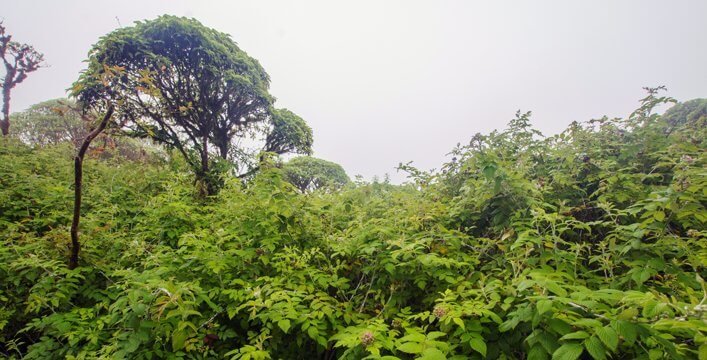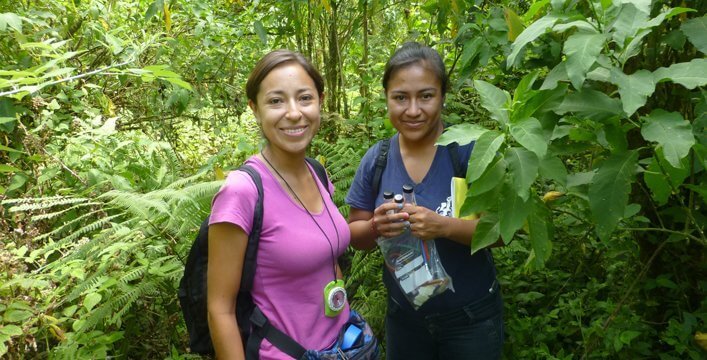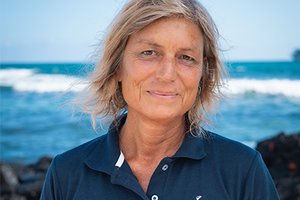
The unique animals and plants of the Galapagos archipelago have experienced few extinctions, mainly due to the late colonization of the islands by humans and the high level of protection of most of the archipelago as an uninhabited national park. However, changes in land use and the presence of invasive plant species have affected much of the natural vegetation cover on inhabited islands.
One habitat type that has been severely affected is the Scalesia forest at Los Gemelos, the iconic twin volcanic sinkholes located on Santa Cruz Island. In the past, the daisy tree, Scalesia pedunculata, was the dominant species in this area. However, due to agricultural activities and invasive plant and animal species, this forest has almost disappeared and now covers less than 1% of its original distribution (~100 hectares). In addition to the many species of plants this forest supports, it is also important for many invertebrates, “Darwin’s Finches”, and two species of flycatcher.

While forest clearing for agriculture is no longer a problem, the threat of invasive species remains. One of the worst invasive plants is Rubus niveus (Rosaceae), commonly known as blackberry or mora in Spanish. This species grows vigorously in the highlands, preventing recruitment of native seedlings and rapidly turning a forest once rich in species into a thicket of blackberry. Over the last 10 years, the Galapagos National Park Directorate (GNPD) has carried out invasive species management by controlling blackberry and restoring the Scalesia forest at Los Gemelos with nursery-grown Scalesia saplings.
However, the hard work and significant finances invested in this management have not produced the results that were hoped for. Previously invaded areas are recovering slowly and require continuous control because of blackberry re-invasion. There is also concern that intensive management has changed the structure of the forest, and that this may be impacting the invertebrates and birds that live there.

In 2014, it was decided that an extensive approach was needed to really understand what is happening at Los Gemelos. Plant and invertebrate scientists from the Charles Darwin Foundation teamed up with the GNPD and with a team of scientists, led by ornithologist Sabine Tebbich from the University of Vienna, to implement an investigation of the short and long-term effects of blackberry management on the vegetation, invertebrates and bird species in this forest. Since then, the teams have been busy monitoring bird reproductive success, measuring plant cover and trapping invertebrates. We are hopeful that this three-year study will provide science-based advice on the direct and indirect effects of restoration programmes at Los Gemelos and will help determine the best control actions for the future.

Collaborators: Ministry of Environment through the Galapagos National Park Directorate, Galapagos Biosecurity Agency, Ministry of Agriculture, Livestock, Aquaculture and Fisheries, Fund for the Control of Invasive Species, CABI, University of Vienna
Funders: Galapagos Conservancy and Keidanren Nature Conservation Fund. The GNPD provides in-kind funding support through project staffing.
More information







